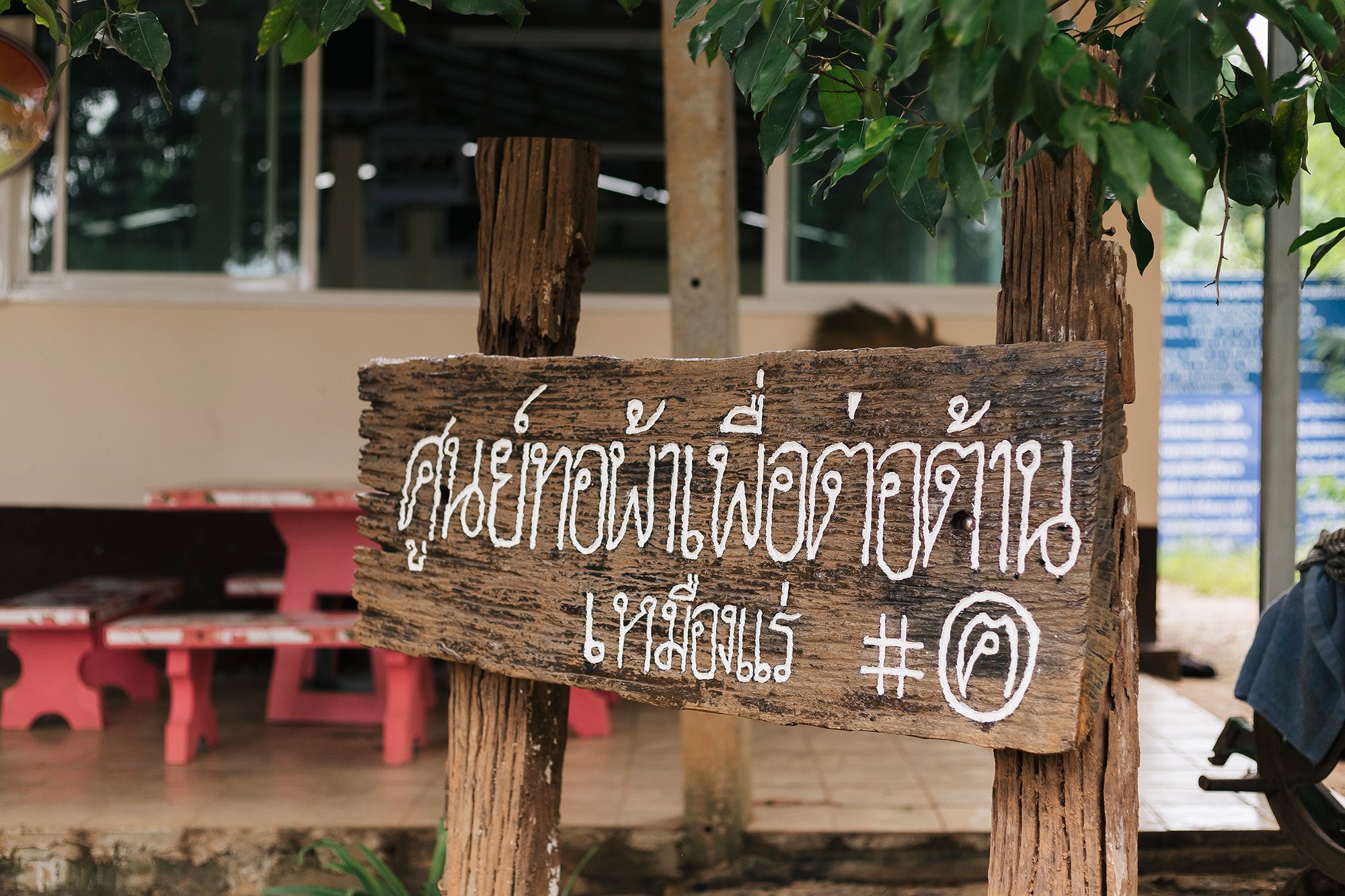
Resources
Mining Rights and Context in Loei, Thailand
-
The whiteboard animation created by CIEE Khon Kaen students in 2013 illustrates the basic timeline of the Tungkum Ltd. gold mine in Loei Thailand, its immediate effects on community members, and the formation of Khon Rak Ban Kerd to fight back.
-
Fortify Rights’ 90 page report “We Fight to Protect Our Home:” Reprisals Against Environmental Defenders in Loei Province, Thailand, documents ten years of abuses against a mining-affected community in Wang Sa Phung District, Loei Province. Documented abuses and violations include judicial harassment, arbitrary detention, death threats, and violations of the rights to freedom of expression, peaceful assembly, and a healthy environment. The report exposes unchecked environmental contamination of rivers and streams surrounding the gold mine as well as impunity for a coordinated, violent attack by a soldier-led masked militia against community members in 2014.” Published in 2018. Available in English and Thai.
-
Reuters reports on the attack on Na Nong Bong community members on May 14, 2014. Armed men came into the community and hog-tied and beat villagers who had been blocking the road to the gold mine. The men then moved 13 trucks of ore from the mining site through the night. Over 40 community members were beaten.
Radical Grandma Collective
-
Video produced in 2016 by The Color Four, a video production team that includes Emmy-nominated film maker Sindha Agha and Matty Neikrug that tells the story of the Radical Grandmas and how they use weaving for resistance.
-
Valeria Mongelli covers the story of the Radical Grandmas for The Diplomat in 2020 and how a group of rural women are using weaving as resistance in their fight against a gold mine in Loei, Thailand.
-
Read the Cloud’s 2019 Thai language article on the story of the Radical Grandma Collective. Choenporn Kongma describes how the weaving collective began and the role of women activist weavers. This articles features gorgeous photos of the community taken by Maneenuch Boonroeng.
Human Rights Situation in Thailand
-
Thai Lawyers for Human Rights found that last year at least 1,747 people in 980 cases have been prosecuted due to political protests and expression since the Free Youth Rally on 18 July 2020 until 25 December 2021. Of all the cases, the Emergency Decree and Section 112 cases soared over the course of one year. In addition, the number of cases on the detained prominent pro-democracy activists ranging between 19 to 43 cases.
-
The statement published on International Women’s Day in 2021 by the Community of Women Human Rights Defenders in Thailand that demands an end to State violence and for a new government. The Women Human Rights Defenders Collective in Thailand is comprised of community and grassroots women human rights defenders currently representing seventeen different sectors.
-
“On 25 March 2021, Protection International, together with ENLAWTHAI Foundation (EnLAW), Community Resource Centre Foundation (CRC) and Campaign for Public Policy in Mineral Resources (PPM) submitted a contribution to Thailand’s Universal Periodic Review (UPR). The Universal Periodic Review (UPR) is a human rights mechanism through which, the Human Rights Council (HRC) reviews, on a periodic basis, the fulfilment by each of the United Nations’ 192 Member States of their human rights obligations and commitments. NGOs, national human rights institutions, human rights defenders, academic institutions and research institutes, regional organisations, as well as civil society representatives may submit additional, credible and reliable information to the universal periodic review at certain relevant steps of the process, which are summarised by the Office of the High Commissioner for Human Rights in a Summary of Stakeholders' information.”
-
Read the Cloud’s 2019 Thai language article on the story of the Radical Grandma Collective. Choenporn Kongma describes how the weaving collective began and the role of women activist weavers. This articles features gorgeous photos of the community taken by Maneenuch Boonroeng.
Mining Restoration Theory and Case Studies
-
Becket and Keeling take the stance that many current mining reclamation initiatives simply attempt to cover up the damage done and do not account for social, cultural, and economic damage done to communities. The authors believe that true repair must decolonize the landscape by redistributing power to indigenous communities and follow indigenous knowledge and leadership to create long term reciprocal relationships of care on remediated sites.
-
This case study will examine the AMD&ART in Vintondale, PA. AMD&ART is a park, art installation, and water treatment system for acid mine drainage (AMD) situated on 35 acres of formerly mined land in the heart of coal country. The project is known for bringing together the arts, sciences, and humanities to remediate the land and uplift the cultural heritage of a community that has been largely disinvested in. The project was for the most part successful during its first eleven years because the community was engaged from the beginning, most of the art installations reflected the story of the town, the science was sound, remediation was successful, and there was a long-term plan for care of the site. However, the project ultimately failed because it was unable to transfer leadership to the community
-
Julie Bargmann introduces her design process regarding industrial sites and describes the current challenges and short comings of mining remediation. Bargmann posits that current reclamation legislation and framework for remediation leads to the cultural and physical erasure of mined landscapes. Bargmann believes that future reclamation should treat mined landscapes as a resource of for establishing new ecological and cultural relationships and should acknowledge the beauty and artistic potential of the mined landform itself